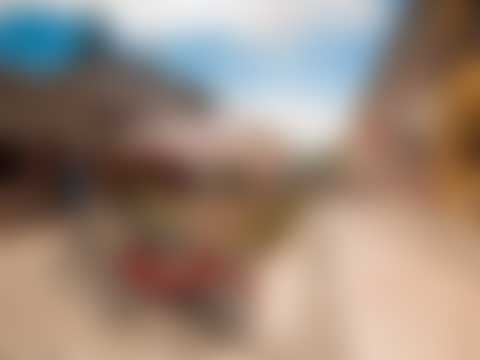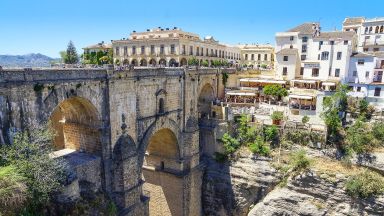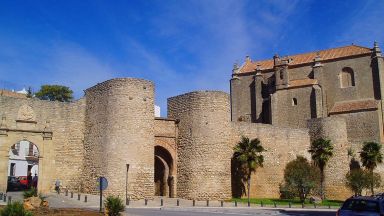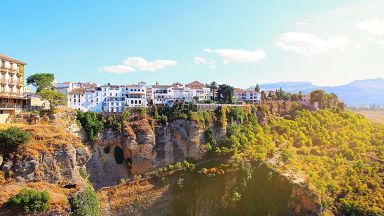Plaza de Toros de Ronda
Bullring and Historic Site in Ronda
The Plaza de Toros de Ronda or Bullring of Ronda is a historic Bullring in Ronda which opened in 1785. It is the oldest bullring in Spain, and it is considered to be one of the cradles of modern bullfighting. It can hold up to 5,000 people, in its shaded stands.
Outside the bullring, you will see the Monumento al Toro or monument to the bull, which pays homage to the bullfight bull.
What you will see at the Bullring of Ronda
There are two layers of seating, each with five raised rows and 136 pillars that make up 68 arches. The Royal Box has a sloping roof covered in Arabic tiles. The design of the main entrance to the bull ring features two Tuscan columns and the royal shield of Spain surround by baroque edging. The main door is large enough to allow horses and carriages to enter the ring, and above the door is an iron wrought balcony that embodies the bullfighting culture.
The Museum of the Bullring of Ronda
There are several daily tours of the bullring and you can learn more about the controversial spectacle that takes place within it, underneath the Bullring’s seats lies the at the excellent museum. The Museo Taurino has different artistic and historical pieces which illustrate the Maestranza’s long history as well as other aspects of chivalry and nobility such as the Collection of Antique Firearms and the Royal Harness Collection of the House of Orleans. It is dedicated to two dynasties of Ronda’s Toreros – the Romeros and the Ordóñez.
Corrida Goyesca at the Bullring of Ronda
Ronda’s stately bullring is now used just once a year for the ‘Corrida Goyesca’ is a unique and historical bullfight during the town’s September Feria.
History of the Bullring of Ronda
The bullring is also the headquarters of the Real Maestranza de Caballería de Ronda, founded by King Philip II in 1572, for the military and equestrian training of the aristocracy.
The bullring was built in 1784 in the Neoclassical style by the architect José Martin de Aldehuela, who also designed the Puente Nuevo. It was on the pale sands of this historic arena that a new kind of bullfighting was forged by Francisco Romero in the 18th century. Romero introduced the now-iconic red cape, known as the muleta, and faced the bull on foot, whereas before matadors had performed on horseback. Outside the arena are statues of Antonio Ordonez, another important Ronda bullfighter (see below) and of a life-size fighting bull, which better enables you to understand how hard it must be to keep still when one of these half-ton animals is running at you.
The Plaza de Toros de Ronda appears in our Complete Guide to Visiting Ronda !
Other names of Plaza de Toros de Ronda
The Plaza de Toros de Ronda has the following names: laza de Toros de Ronda, Bullring of Ronda.
This website uses affiliate links which may earn a commission at no additional cost to you!
Visiting Plaza de Toros de Ronda
Mo-Sun: 10 am – 8 pm
Free entrance (for EU citizens): Monday (8 am – 10 am), Tuesday and Wednesday (9 am – 10 am)
€8 (€9.50 with audioguide
Nearby Attractions
- Monumento al Toro (0.1) km
Monument in Ronda - Paseo de Orson Welles (0.1) km
Street in Ronda - Paseo de Blas Infante (0.1) km
Park in Ronda - Plaza del Socorro (0.1) km
Square in Ronda - Mirador de Ronda (0.1) km
Viewing Point in Ronda - Alameda del Tajo (0.2) km
Park in Ronda - Paseo de Kazunori Yamauchi (0.2) km
Street and Viewing Point in Ronda - Paseo de Ernest Hemingway (0.2) km
Viewing Point in Ronda - Paseo De Los Ingleses (0.2) km
Park and Viewing Point in Ronda - Mirador de Aldehuela (0.3) km
Viewing Point in Ronda



